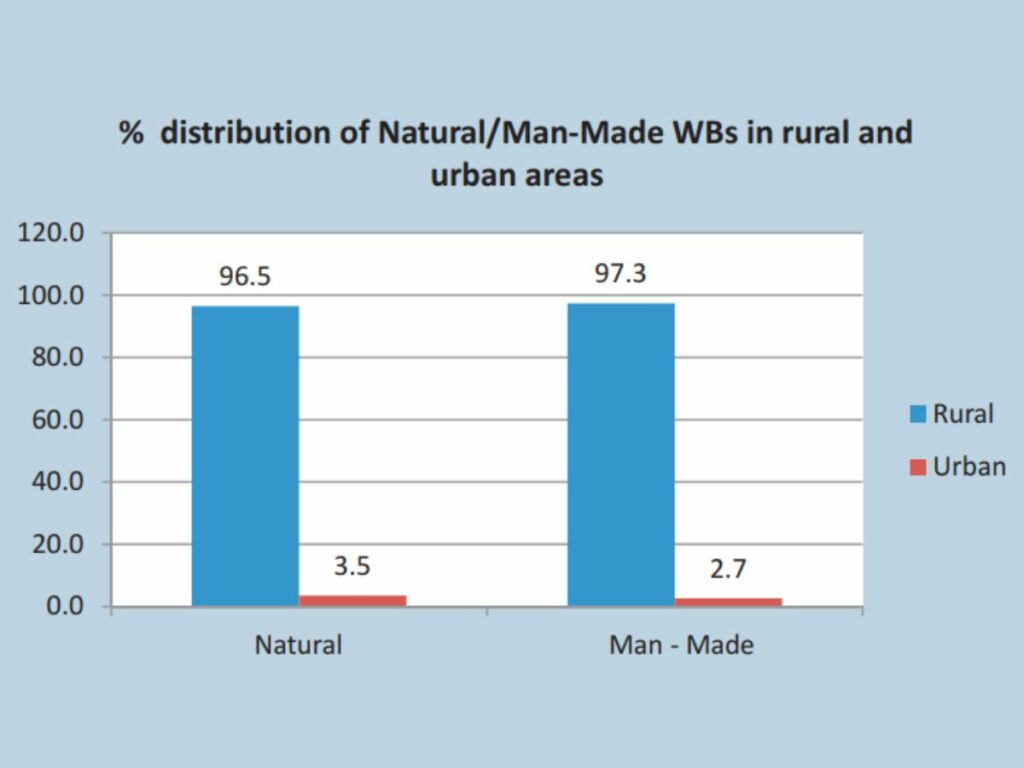
Hyderabad: Under the Union government’s ‘Irrigation Census’ the ministry of Jal Shakti launched the first census of water bodies which documents the size, condition, status of encroachments, use, storage capacity, status of filling up of storage etc., nationwide.
24,24,540 water bodies have been enumerated in the country, out of which 97.1% (23,55,055) are in rural areas and only 2.9% (69,485) are in urban areas.
According to the report, the total number of water bodies in Telangana is 64,056 out of which 98.5% are in rural areas and only 1.5% (992) are in urban areas.
In comparison to the national average, the number of water bodies in urban Telangana is observed to be substantially lower.
5 leading states with maximum number of water bodies:
- Ponds – West Bengal
- Tanks – Andhra Pradesh
- Lakes – Tamil Nadu
- Reservoirs – West Bengal
- Water Conservation Schemes/Check Dams – Maharashtra
Telangana has the fourth highest number of ‘Water Conservation Schemes/Check Dams’ in the country.
Encroachments:
The census found that 1.6% of all the water bodies in the country are the victim of encroachment. Above 95% of these encroachments are being done in the urban areas. In Telangana, the number of water bodies that have been encroached is 3032 which is about 4.3% of the total.
In-use and not-in-use water bodies:
According to the census, 3,94,500 water bodies, amounting to 16.3% of the total in the country, are not in use on account of drying up, construction, siltation, destruction beyond repair, salinity and other reasons.
In the case of Telangana, this number is slightly higher than the national average again. Out of 64,056 water bodies, 80.8% (51,733) water bodies are in use whereas the rest 19.2% (12,323) are not in use for similar reasons, states the report.
Out of the ‘in use’ water bodies, the majority of them are used for irrigation followed by groundwater recharge.
Across the country, 90.1% of the ‘in use’ water bodies are observed to be fulfilling requirements of up to 100 people only. Of all the water bodies in use, only 0.8% fulfil the requirements for more than five cities, towns or villages.
Ownership
Another interesting data point is the ownership of water bodies. We see that across the country more than half are owned by private entities.
55.2% (13,38,735) of water bodies across India are owned by private entities whereas 44.8% (10,85,805) of water bodies are in the domain of public ownership.
About 80.5% of the water bodies in the state are under public ownership while the rest are privately owned.
Man-made v/s Natural
Amongst all the 24,24,540 water bodies in India, 78% (18,90,463) water bodies are man-made and the remaining 22% (5,34,077) are natural water bodies.
In urban Telangana, 603 water bodies are man-made and 389 are naturally occurring.
The percentage distribution of natural and manmade water bodies in rural-urban sector is given in the bar charts given below:




